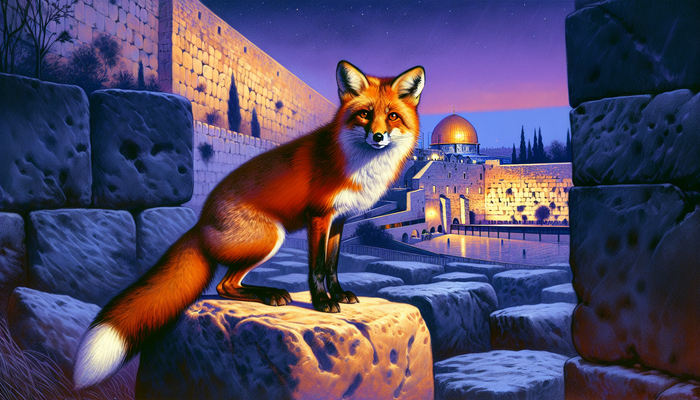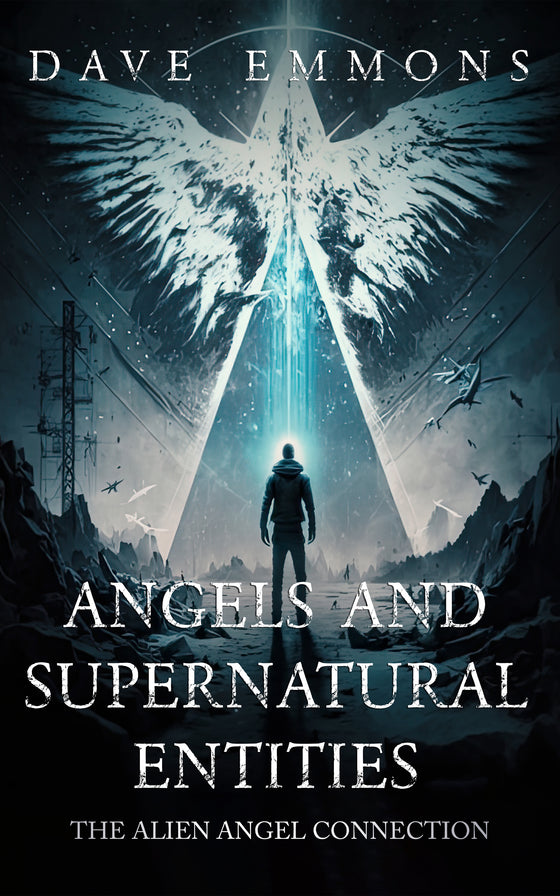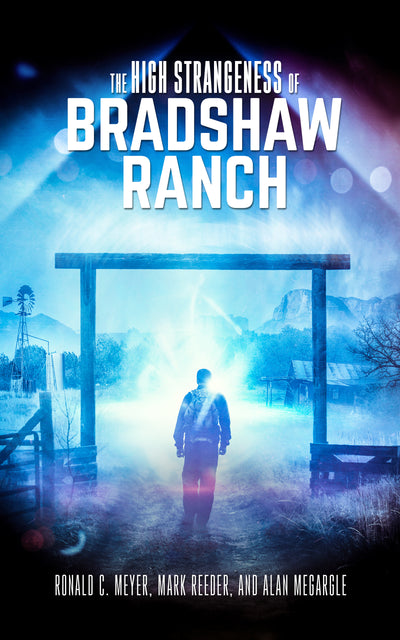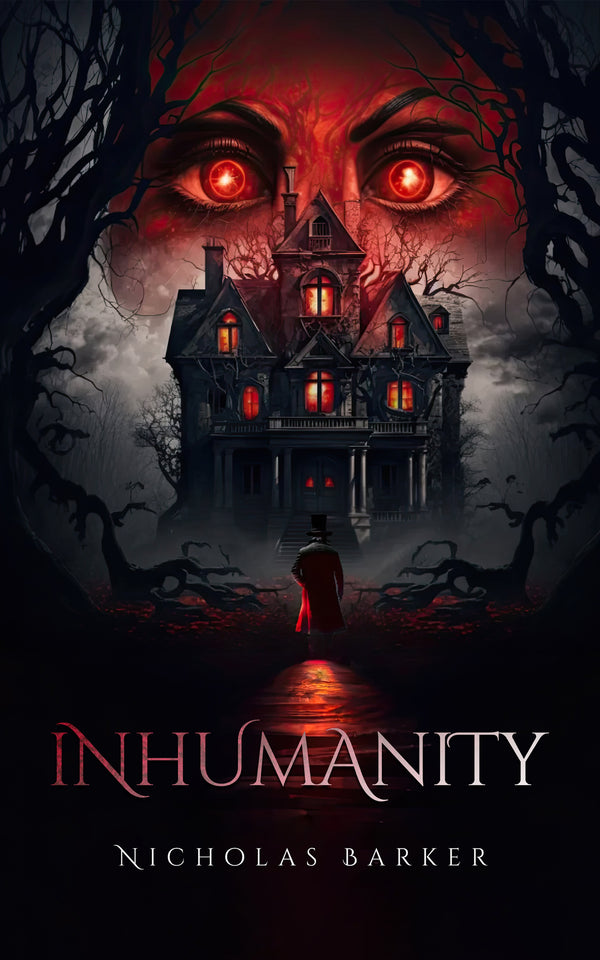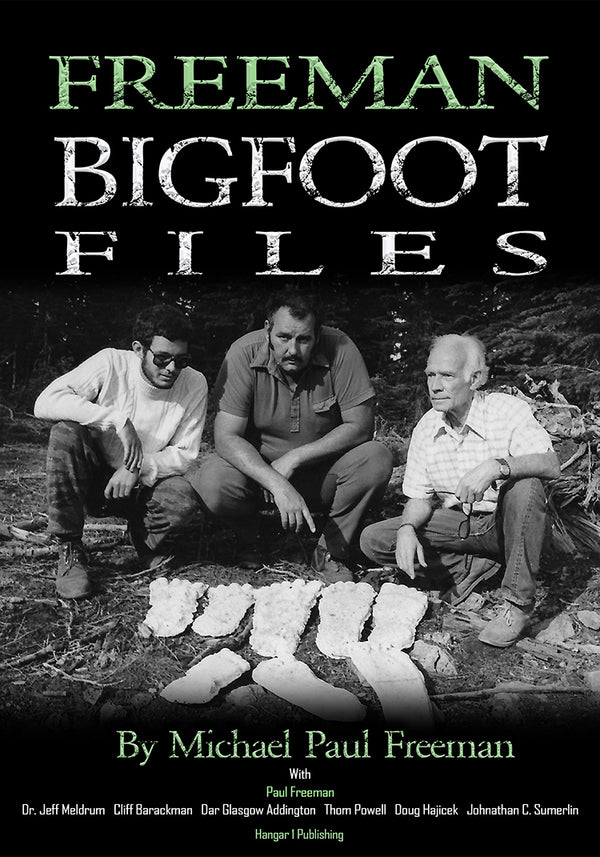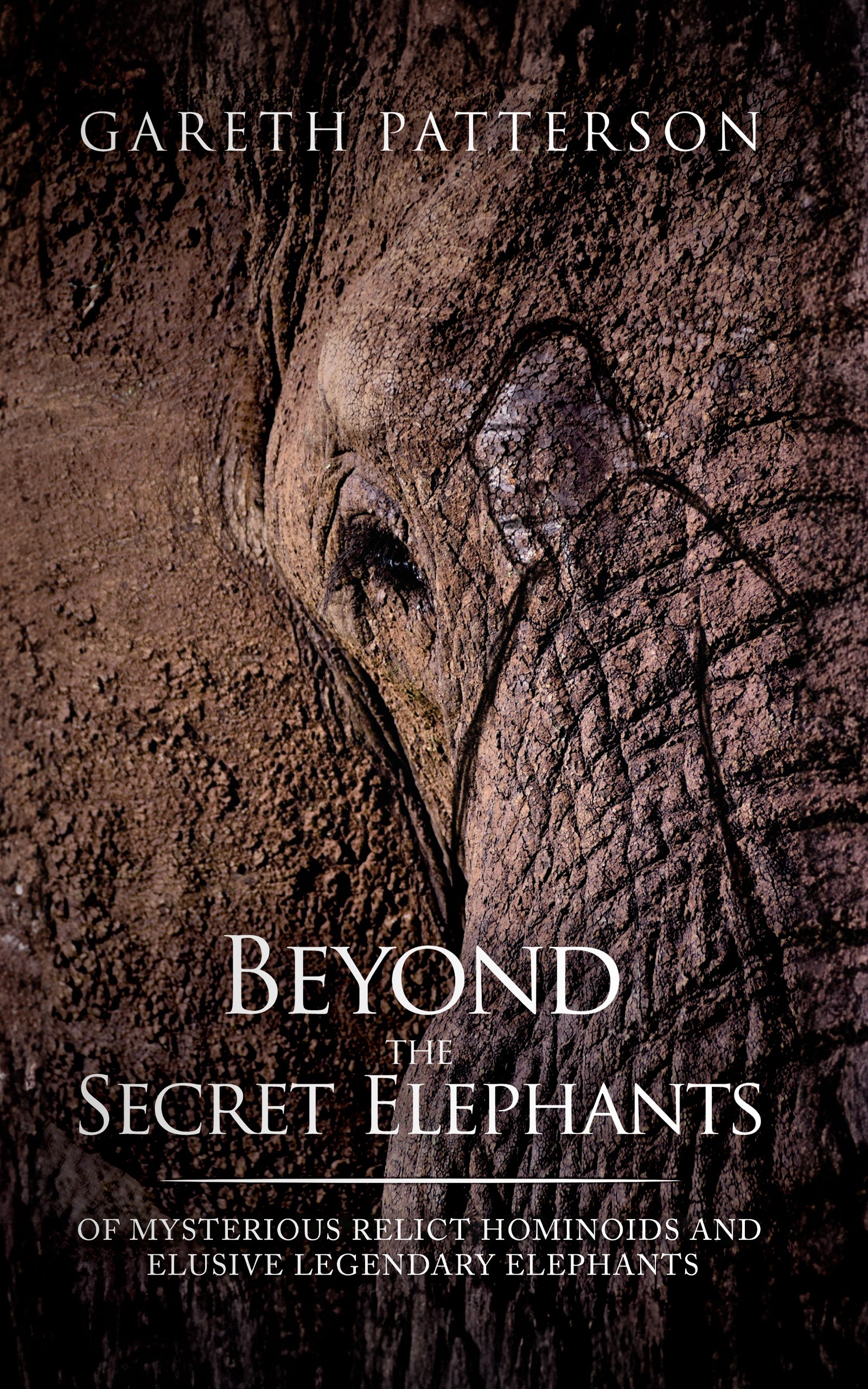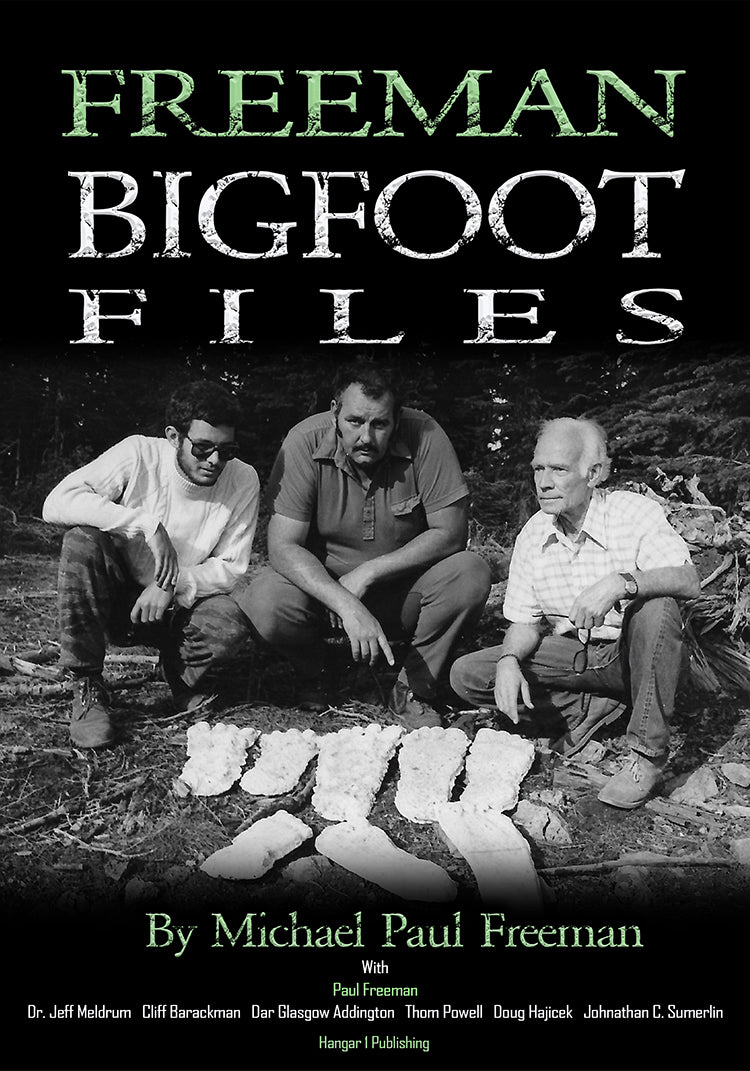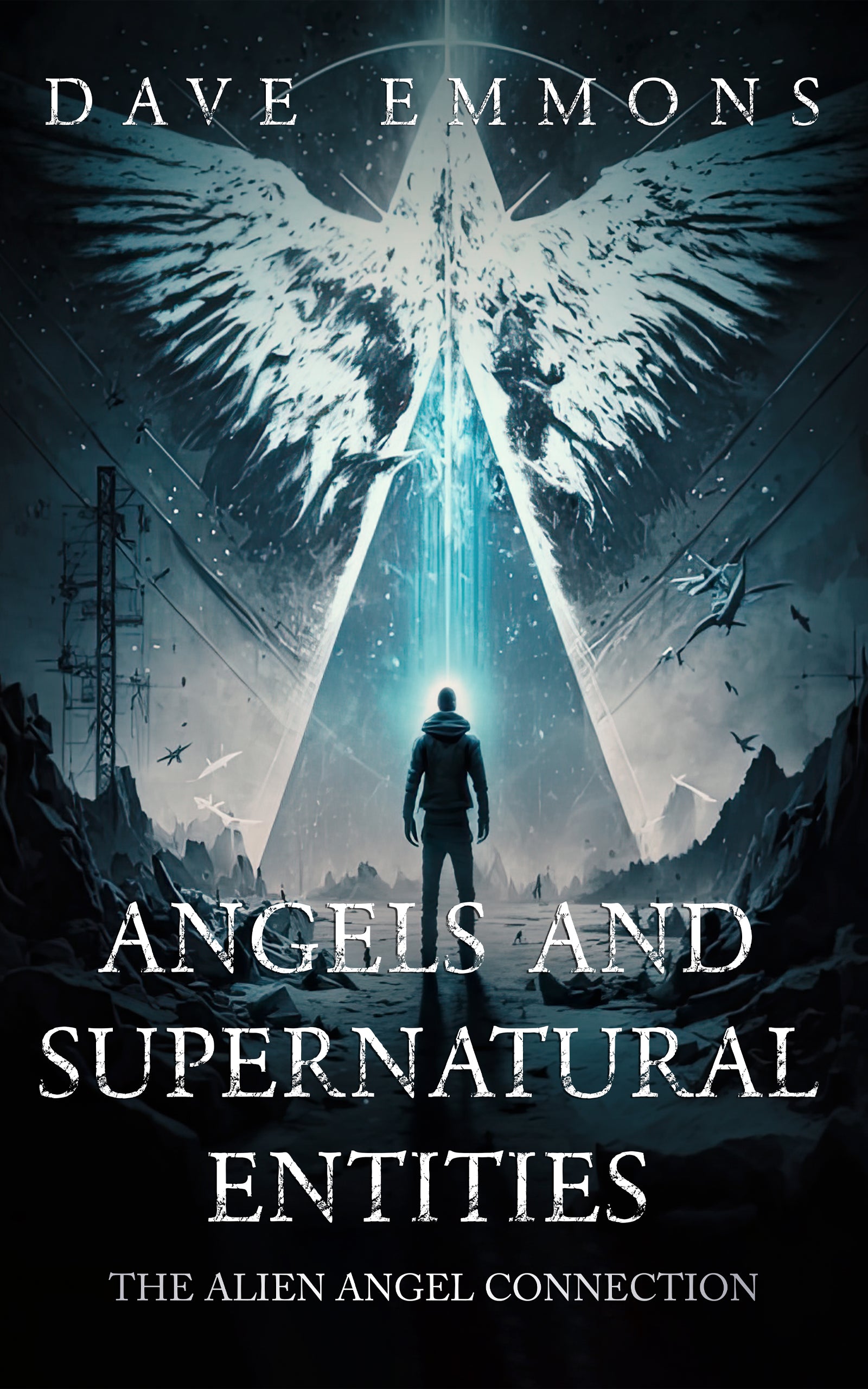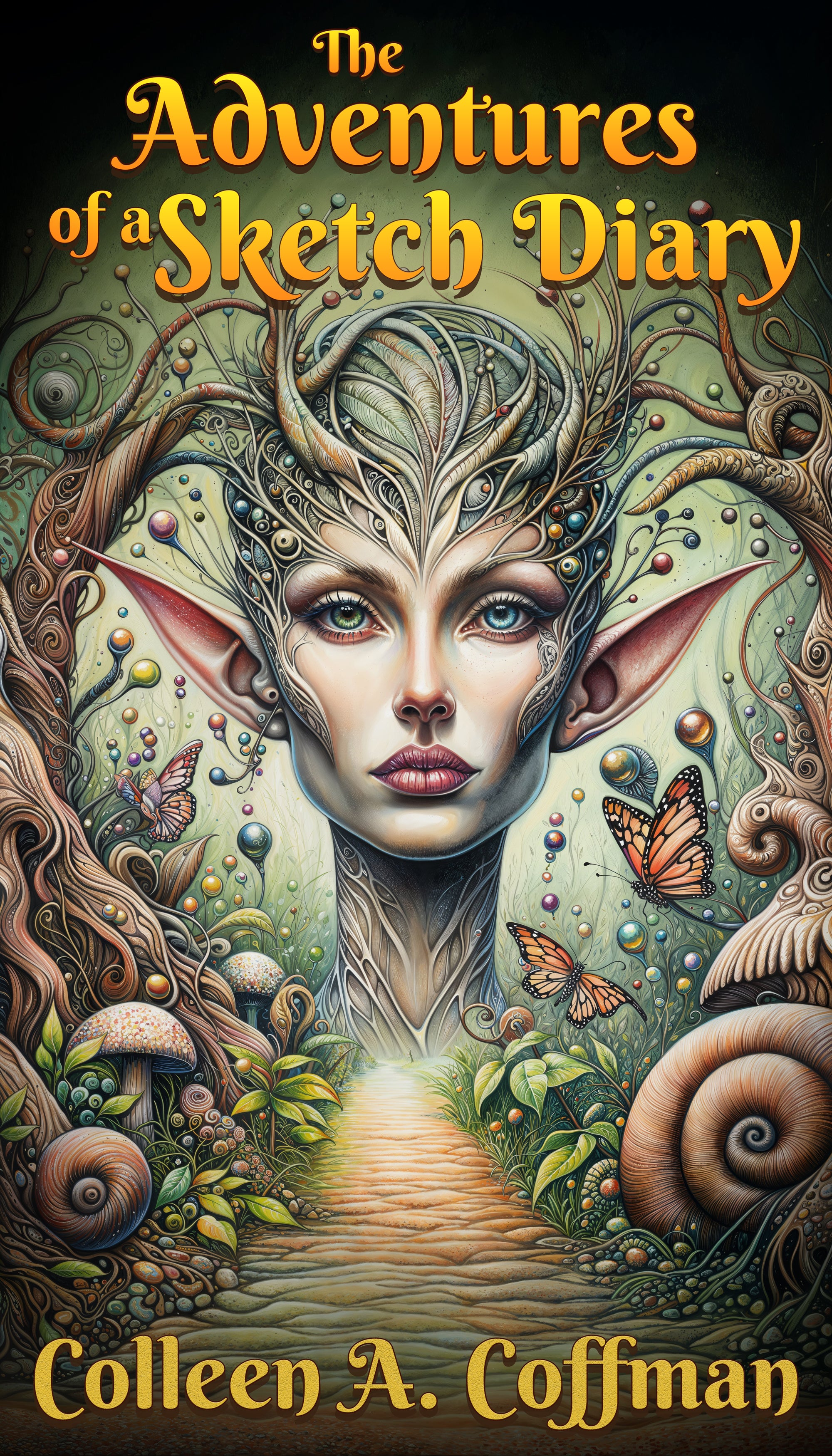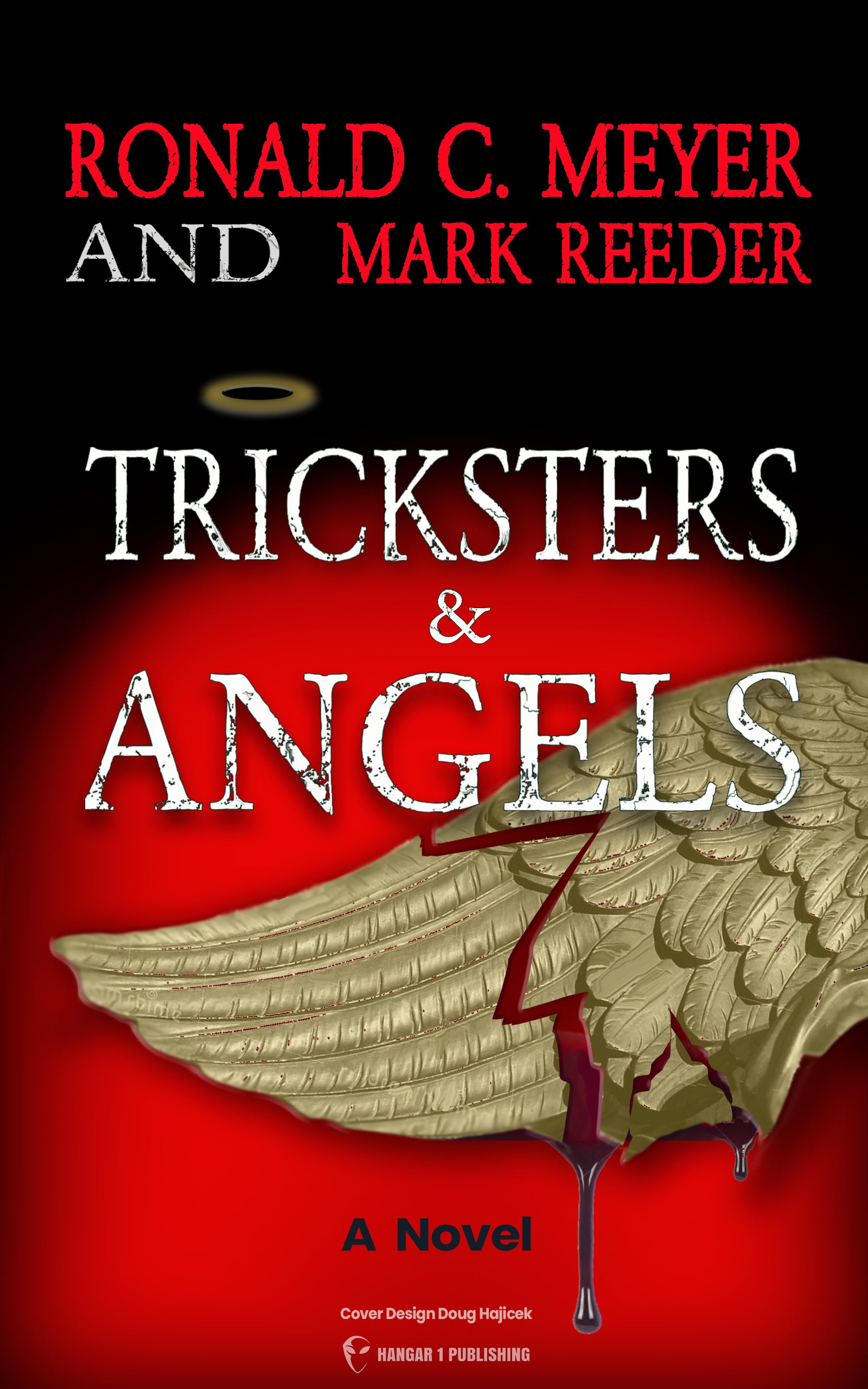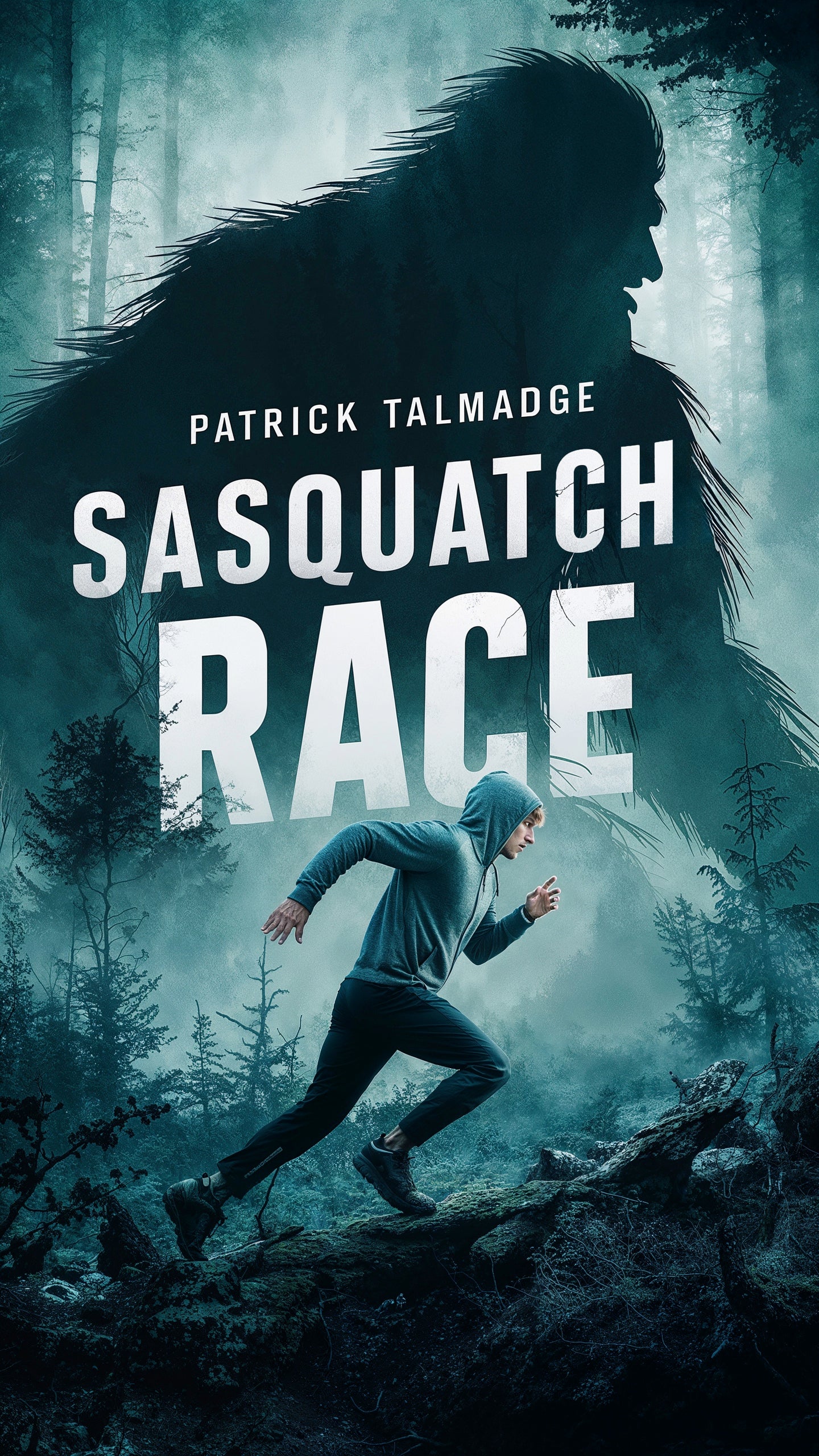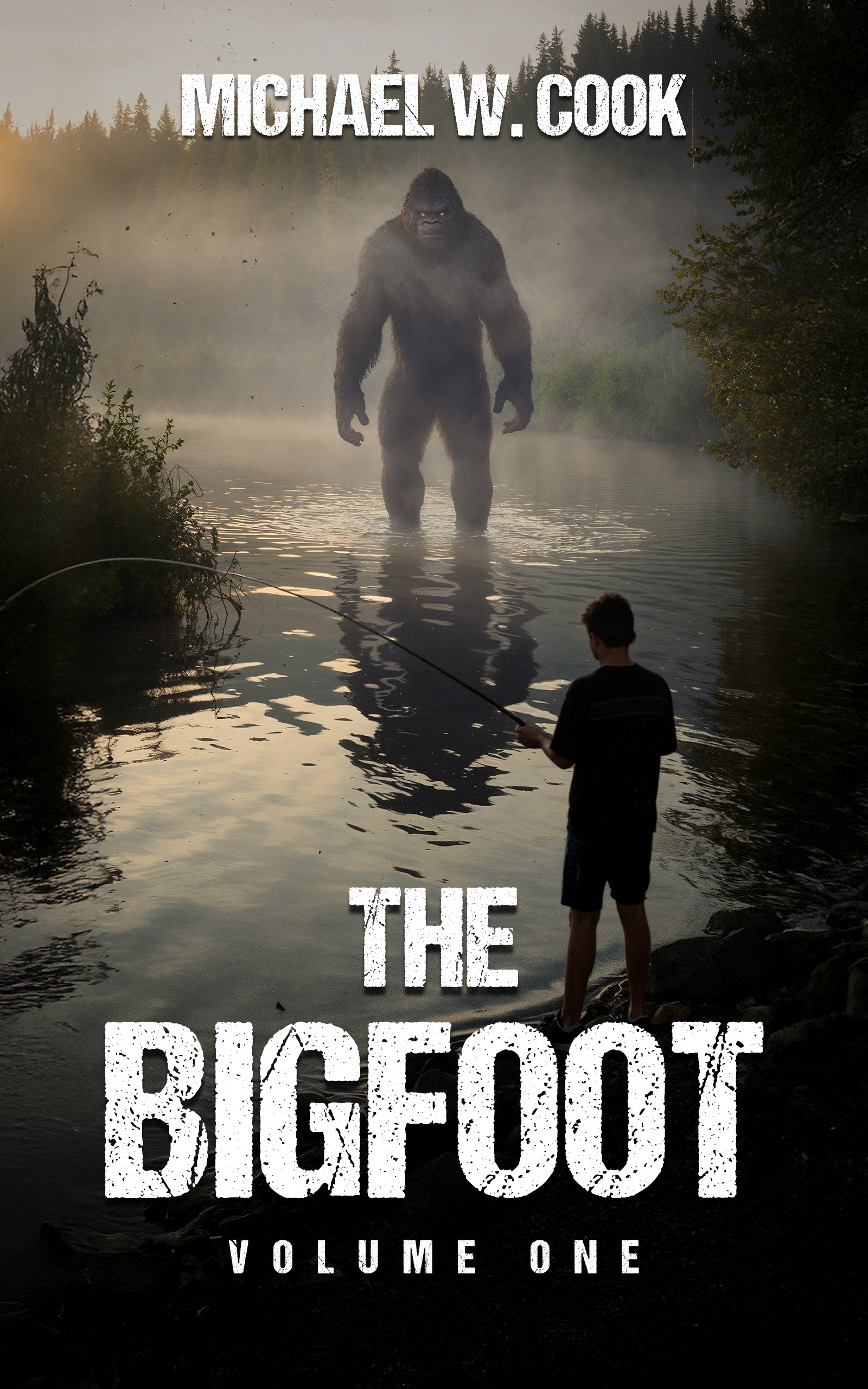Discover The Secrets of The Kolbrin Bible

By Elaine Westfield, Ufologist
Have you ever wondered if ancient texts contain secrets deliberately omitted from mainstream history and religion? While the Dead Sea Scrolls and Nag Hammadi Library have gained scholarly acceptance, another collection of writings remains shrouded in mystery and controversy: The Kolbrin Bible.
This alleged 3,600-year-old secular anthology claims to preserve knowledge from both Egyptian and Celtic sources, offering startling alternative perspectives on biblical events and human history. More shocking still, it speaks of advanced civilizations that existed before Adam and Eve and warns of cyclic global catastrophes caused by a celestial entity known as "The Destroyer."
Is this remarkable text an authentic window into our forgotten past or an elaborate fabrication? Let's explore the extraordinary claims, content, and controversies surrounding The Kolbrin Bible.
Unearthing The Kolbrin Bible: A Journey Through Time and Texts
The Genesis of a Mystery: Tracing Alleged Ancient Roots
The Kolbrin Bible's proponents claim it originated in ancient Egypt, potentially predating many well-known scriptures. According to its own narrative, the original Egyptian component-known as "The Great Book"-was penned by Egyptian academicians around 1500 BCE following the Hebrew Exodus. These Egyptian scribes were supposedly searching for understanding of the "one true God of Abraham" after witnessing the devastating events of the Exodus.
What makes this origin story particularly fascinating is the suggestion that the wisdom contained within the Kolbrin might have been brought to Egypt by survivors of even more ancient disasters-possibly the legendary civilizations of Atlantis or Lemuria. The text refers to highly advanced societies whose members survived a great cataclysm by hiding in underground shelters. These individuals, called the "children of God" in the text, are described as the "Fallen Angels" who later married the daughters of Adam and Eve.
The transmission of this knowledge followed a complex path. According to the Kolbrin's backstory, Phoenician traders-who operated advanced ocean-going vessels throughout the Mediterranean and beyond-translated the original hieratic Egyptian writings using their 22-letter alphabet (which later influenced Greek, Roman, and English alphabets). They distributed copies of "The Great Book" to various ports, including Britain in the 1st Century BCE.
Later, Celtic priests allegedly added their own wisdom traditions, creating what would become the "Coelbook." The name "Kolbrin" itself reflects this merger, combining "Coel" (from Coelbook) with "Brin" (from Britain or Bronze Book).
The resulting collection consists of 11 books: six Egyptian texts (collectively called the "Bronzebook") and five Celtic texts. The Egyptian sections include Creation, Gleanings, Scrolls, Sons of Fire, Manuscripts, and Morals and Precepts. The Celtic portions comprise Origins, The Silver Bough, Lucius, Wisdom, and Britain.
A Scroll's Perilous Passage: Survival Against the Odds
If the Kolbrin's origin story seems miraculous, its alleged survival through history is equally remarkable. According to the narrative, Egyptian scrolls that would later form part of the Kolbrin were rescued from the burning of the Great Library of Alexandria by diligent scribes who foresaw the impending destruction.
Joseph of Arimathea-described as Jesus's great-uncle-reportedly played a key role in bringing these texts to Britain. After Jesus's crucifixion, Joseph and other followers transported the scrolls to Britain for safekeeping, where they had family connections. The Kolbrin suggests that Jesus's grandmother, St. Anna, was born in Brittany, explaining these pre-existing ties to Western Europe.
The manuscripts supposedly found a home at Glastonbury Abbey, a location steeped in Arthurian legend and considered by some to be a sacred gift to Jesus's family. With 1,920 acres, Glastonbury allegedly operated with significant autonomy, often functioning like a sovereign nation exempt from royal taxation.
The Kolbrin's custodians claim it narrowly escaped destruction in 1184 when Glastonbury Abbey burned. Some attribute this fire to King Edward I (Longshanks), who allegedly viewed the Kolbrin as a heretical rival to the Bible and a threat to his claim to the English throne. However, this attribution represents one of several historical inconsistencies, as Edward I wasn't born until 1239, decades after the fire.
Celtic priests reportedly saved some manuscripts by transcribing them onto bronze sheets and storing them in copper-lined containers-earning the name "The Bronze Book of Britain." The bronze and copper materials supposedly protected the texts from fire and other threats.
After centuries of secretive preservation, the Bronze Book and Coelbook were merged in the 18th century to form what is now called the Kolbrin Bible.
Guardians of Forbidden Knowledge: Secretive Preservation
Throughout its alleged history, the Kolbrin Bible has supposedly been guarded by various secretive groups. Most recently, an organization called the Hope Trust cared for the manuscript until 1995. As this group was dissolving, a leader purportedly distributed copies to ensure the text's survival.
Currently, the Culdian Trust in New Zealand claims to be the legitimate custodian of the Kolbrin. They published a version in 1994, while other editions have emerged from Your Own World Books in America, edited by Janice Manning and Marshall Masters. The Culdian Trust considers the Manning/Masters version unauthorized.
Besides these published versions, isolated copies are claimed to exist in Lebanon, England, and even the Vatican-though these claims remain unverified.
The multiple guardians, narrow escapes from destruction, and secretive transmission create a compelling mystique around the Kolbrin. Yet these same elements make verifying its authenticity exceptionally challenging. Without hard evidence of its ancient origins, we're left with a fascinating but unproven narrative.
Peering into the Pages: Thematic Explorations within The Kolbrin Bible
Creation and the Dawn of Humanity: Beyond Adam and Eve
One of the Kolbrin's most provocative assertions comes in its creation narrative, which directly challenges traditional biblical accounts. The Book of Creation states: "It is known and the story comes down from ancient times that there was not one creation but two. A creation and a recreation. It is a fact known to the wise that the Earth was utterly destroyed once then reborn on a second wheel of creation."
This dual creation concept introduces the Kolbrin's recurring theme of cyclic destruction and renewal. More shocking to conventional religious understanding is the text's assertion that humans existed before Adam and Eve. These earlier people weren't merely primitive hominids but supposedly members of advanced civilizations with technological capabilities.
According to the Kolbrin, these pre-Adamic people-the "Fallen Angels" of Genesis-survived a great cataclysm by hiding in underground shelters. The term "Fallen Angels" doesn't refer to spiritual beings but to mortal men who later married the daughters of Adam and Eve. This interpretation radically reframes a key biblical concept.
The Kolbrin's account of Adam and Eve themselves is described by proponents as "elegant," presenting them not as the first humans but as a special creation with a particular purpose in Earth's spiritual evolution. This narrative potentially bridges the gap between scientific evidence of human evolution and religious creation stories, suggesting both could contain partial truths.
These alternative interpretations establish the Kolbrin's pattern of offering familiar religious stories with dramatic twists that challenge conventional understandings.
Echoes of Cataclysm: The Destroyer and Its Return
Central to the Kolbrin's worldview is the concept of cyclical global catastrophes caused by a celestial object. The Egyptian texts call this entity "The Destroyer," while Celtic portions refer to it as "The Frightener." Modern interpreters have connected this concept to similar ideas from various cultures and contemporary fringe theories about objects like Planet X, Nibiru, Wormwood, and Nemesis.
The Kolbrin's description of the Destroyer is vivid and terrifying. From Manuscripts 3:4-6:
"When blood drops upon the Earth, the Destroyer will appear, and mountains will open up and belch forth fire and ashes. Trees will be destroyed and all living things engulfed. Waters will be swallowed up by the land, and seas will boil. The Heavens will burn brightly and redly; there will be a copper hue over the face of the land, followed by a day of darkness. A new moon will appear and break up and fall."
The text continues with equally apocalyptic imagery:
"The people will scatter in madness. They will hear the trumpet and battle cry of the Destroyer and will seek refuge within dens in the Earth. Terror will eat away their hearts, and their courage will flow from them like water from a broken pitcher. They will be eaten up in the flames of wrath and consumed by the breath of the Destroyer."
Elsewhere, the Destroyer is described as a "circling ball of flame" that gathers "small fiery offspring" and sends down "writhing snake-like fingers" to Earth. The Kolbrin attributes previous global disasters, including the Great Flood and the plagues of Exodus, to this celestial intruder's periodic returns.
Perhaps most unsettling is the Kolbrin's prophecy that the Destroyer will return in our time. The manuscript lists specific signs presaging this return, including people flying through air as birds, swimming as fishes, gender role reversals, hypocrisy in peace talks, and various social degradations. To many readers, these signs seem eerily reminiscent of modern conditions, giving the prophecies a disturbing resonance.
Alternate Histories: The Exodus and the Flood Reimagined
The Kolbrin offers alternative perspectives on familiar biblical events, most notably the Exodus. The chapter titled "The Dark Days" presents an Egyptian view of this pivotal story, contrasting sharply with the triumphant Israelite narrative in the Bible.
What makes this account particularly interesting is how it aligns with other ancient Egyptian sources. Passages in the Kolbrin parallel sections of the Papyrus Ipuwer, which some scholars date to around 1250 BCE and believe to be copied from an even older text. Both describe similar conditions: people's faces turning pale, laughter ceasing, women becoming barren, slaves growing bold, natural disasters, darkness, blood in the river, and social order inverting with the poor becoming rich and vice versa.
Consider these parallel excerpts:
From Papyrus Ipuwer: "Indeed, the face is pale" and "Indeed, laughter is perished and is [no longer] made; it is groaning that is throughout the land, mingled with complaints."
From the Kolbrin: "All men were silent and went about with pale faces" and "Laughter was heard no more and grief and wailing sounded throughout the land."
The Kolbrin's Exodus account contains unique details absent from biblical texts. It suggests many Israelite slaves tried to turn back during the escape, that the majority perished at the hands of Egyptian charioteers before the catastrophic water event, and that a new pharaoh (named Anturah) unsuccessfully fought invaders before suffering a breakdown, fleeing southwest, and spending his remaining life "among the sand wanderers" where he "wrote books."
Similarly, the Kolbrin attributes the Great Flood to the Destroyer's previous visit, describing how "the floodgates of Heaven were opened and the foundations of Earth were broken apart" when "the Destroyer flung itself through the Heavens."
These alternative accounts position the Kolbrin as either a remarkable independent confirmation of biblical events from a different cultural perspective or an elaborate fiction skillfully incorporating elements from various ancient sources.
Prophecies and the Cycle of Time: Warnings for the Latter Days
Beyond recounting past catastrophes, the Kolbrin contains extensive prophecies about future events, particularly the Destroyer's return. The text claims "the times of its coming and going are known unto the wise" and outlines specific signs preceding its appearance.
From Manuscripts 3:7:
"A hundred and ten generations shall pass into the West, and nations will rise and fall. Men will fly in the air as birds and swim in the seas as fishes. Men will talk peace one with another; hypocrisy and deceit shall have their day. Women will be as men and men as women; passion will be a plaything of man."
The prophecy continues, predicting division between high and low, north and south, east and west, and light and darkness. It foretells racial strife, children born as strangers, family discord, fathers failing to instruct sons, and women becoming "common property of men." Despite material wealth, people will be "poor in spirit," troubled by uncertainty and doubt, seeking what they "know not what."
These predictions carry an unsettling resonance with contemporary social conditions, which may explain why the Kolbrin has gained traction among those interested in prophetic literature and apocalyptic scenarios. The text's warning that "heralds of doom" will appear "softly as thieves," unrecognized by most people, adds to its aura of hidden knowledge being revealed to the discerning few.
For believers in the Kolbrin's authenticity, these prophecies represent ancient foreknowledge of our current predicament. For skeptics, they demonstrate the universal nature of social concerns across time or suggest modern authorship backdated to appear prophetic.
Deeper Mysteries and Unique Narratives: Examining Hidden Wisdom
The Journey to the Abode of the Dead: Hermanotard's Quest for Immortality
Among the Kolbrin's most captivating narratives is the story of Hermanotard, son of the legendary Gilgamesh. Like his father before him, Hermanotard embarks on a quest for knowledge about life after death following the loss of a dear friend.
His journey takes him to a mysterious cave known as the "portal of the Dead." After performing specific rituals with an old woman, he enters the cave and experiences bizarre sensations-his body becomes "light and airy" as he moves through dark passages. He encounters terrifying guardians at a gate, including entities called "the Watchman" and "the Terror," which he confronts with his sword before they mysteriously vanish.
Hermanotard continues through various challenges: a pool reflecting strange visions, attacks by great birds with "strange heads," seven-bolted doors requiring correct answers to seven questions, battles with "four Great Beast beings" in a courtyard, and a struggle with "Acommon the terrible King."
Finally, using a "great key," he opens the "door of the Spheres" and enters the "Abode of the Dead"-actually described as the "land of Eternal living." There, he reunites with his friend Yadol, who appears transformed into "a more glorious form" that the text likens to a light body. This realm is described as "bright and flowing," a place of "trees and waters" that "no man can describe."
Yadol explains that Hermanotard is exceptional for having "passed through the portal of death while yet uncalled from the Embrace of the flesh." As a consequence, Yadol informs him his life will be shortened. He instructs Hermanotard to record his experiences in two books: one containing "sacred Secrets" for "the elect alone" and another recording "sacred mysteries" for those studying under the elect.
This tale parallels ancient initiation mysteries while adding unique elements. It suggests the possibility of accessing spiritual realms while still in physical form-a concept found in various mystic traditions. Yet unlike many mystical accounts, Hermanotard's journey has both literal and symbolic dimensions, combining physical travel with spiritual transformation.
The Misty Veil and the Barrier to God: Loss of Connection and the Path Back
The Kolbrin presents a fascinating explanation for humanity's separation from divine realms. According to Yadol, "Once men could pass easily from these spheres," but over time, a "Misty Veil" and "grim portal of death" emerged separating the physical and spiritual worlds. This barrier formed due to humanity's "contamination" through sin.
This concept echoes the Garden of Eden story but with an important twist-it describes not just a single event of expulsion but a gradual thickening of the barrier between worlds as humanity strayed further from divine principles. The text suggests there were times when "men walked with their father God" but those days are gone.
After his spiritual journey, Hermanotard has a direct encounter with God, who appears in "a great flash of light" and introduces himself as "the god of gods and the god of men." God explains his nature as "the hidden God, the god of secret manifestation, the wronged God, the betrayed God, the disappointed God."
God's disappointment stems from humanity's rejection of their divine potential: "I Am The God Who sought to give Divine love to men by making them my heirs, making them partakers of divinity, co-creators with me." But this divine plan was thwarted because "men destroy their Birthright not through wickedness alone but through their weakness and just love of pleasure."
The text emphasizes that the barrier exists because "man has chosen this" and "the barrier between us grows even more dense as man wantonly spurns his Birthright." Yet hope remains, as "sincere prayers of the Pure Heart" can still penetrate this barrier.
A striking aspect of this teaching is its universality-while presented in language familiar to Judeo-Christian audiences, the underlying concept of humanity's separation from divinity through attachment to material pleasures appears in many spiritual traditions worldwide.
The Nature of Divinity and the Crown of Achievement
The Kolbrin offers profound insights into the nature of divinity and time. God explains to Hermanotard: "What appears to you as ages in time is to me but a flash of thought and a moment of Eternity. I breathe in and the host of the earth and the Spheres were not; I breathe out and the host of the earth and the Spheres were."
This passage beautifully expresses the concept that divine consciousness experiences reality outside our linear time constraints. The metaphor of an arrow striking its mark instantaneously from God's perspective, while humans perceive it as traveling through time, illustrates the text's sophisticated understanding of relative perspectives on time.
A particularly noteworthy teaching concerns the nature of divinity itself. The Kolbrin states: "Divinity of itself is not created, it can't be bestowed as a gift, it comes as the crown of achievement." This suggests spiritual enlightenment isn't simply granted but earned through conscious development.
The text warns against "weakness" and "love of pleasure/easy sense gratification," particularly regarding sexuality. It describes how such indulgence "pollutes the Wellsprings of life" and "weakens consciousness." While this might seem puritanical, it's presented not as moralistic judgment but as practical spiritual guidance-attachment to physical pleasure creates barriers to higher consciousness.
The Kolbrin's path to divinity involves "long and arduous preparations" through the "word of God," "not taking thought," and "seeking the kingdom of God." This process ultimately leads to victory over the "second death" and access to the "Tree of Life" in the "garden of God."
These teachings present spiritual development as a systematic process of consciousness evolution rather than simple adherence to religious dogma. This perspective aligns with both mystical traditions within mainstream religions and various wisdom traditions worldwide.
Navigating the Controversy: Debating The Kolbrin Bible's Validity
Questioning Ancient Origins: The Evidence Problem
The fundamental challenge to the Kolbrin's authenticity is the complete absence of physical evidence supporting its claimed ancient origins. No manuscripts, fragments, or even scholarly references to such a text existed in historical records before the mid-20th century.
While proponents explain this as resulting from deliberate suppression and secretive preservation, skeptics point out that even genuinely ancient texts that were "hidden" for centuries (like the Dead Sea Scrolls or Nag Hammadi Library) left some historical traces and physical evidence of their age when discovered.
The Kolbrin's first documented mention appears in James McCanney's 2003 book "Atlantis to Tesla - The Kolbrin Connection," followed by Marshall Masters' 2004 book "Indigo-E.T. Connection." Both authors are associated with fringe theories, particularly regarding Planet X/Nibiru, raising questions about whether the Kolbrin was created or promoted specifically to support these theories.
The text's publishers acknowledge that "additional material has been incorporated with good intent, to fill gaps and elaborate on the original" and make "no claim regarding historical accuracy." These admissions further complicate authentication efforts.
Without carbon dating of original manuscripts or references in other historical documents, the Kolbrin's claimed 3,600-year history remains unsupported by conventional historical evidence.
Authorship and Fabrication Claims
The Kolbrin's authorship is another major point of contention. If not written by ancient Egyptian and Celtic sources, who created it?
Some critics suggest the involvement of Iolo Morganwg (Edward Williams, 1747-1826), a Welsh antiquarian and poet known for forging documents he claimed were ancient Welsh texts. Morganwg mentioned a book of Bardic wisdom called the "Coelbren" in his work "Barddas" (published posthumously in 1862). While the content doesn't match the Kolbrin, the similar name and Morganwg's history of creating pseudo-historical Celtic texts make him a potential influence.
The Kolbrin's modern English style and occasional anachronisms suggest recent composition rather than translation from ancient languages. Its sophisticated blending of elements from various ancient texts indicates someone with extensive knowledge of comparative religion and mythology.
Some skeptics position the Kolbrin as an "elaborate Illuminati hoax" designed to support apocalyptic theories and occult interests. Others suggest it may be a sincere attempt to preserve wisdom teachings in a form that would appeal to contemporary spiritual seekers.
Without clear authorship information or original manuscripts, determining whether the Kolbrin represents ancient wisdom, modern fiction, or some combination remains impossible.
Historical Inaccuracies and Anachronisms
Several historical errors in the Kolbrin's backstory raise serious questions about its authenticity. Most notably:
- The text claims King Edward I (Longshanks) ordered the burning of Glastonbury Abbey in 1184 to destroy the Kolbrin. However, Edward I wasn't born until 1239, making this chronologically impossible.
- The narrative suggests Druidic priests transcribed the text onto bronze sheets after the 1184 fire, but historical Druidism had been extinct for centuries by that time. The practice of inscribing lengthy texts on bronze was also uncommon in 12th-century Britain.
- The Kolbrin mentions the suppression of English monasteries occurring around the time of the Glastonbury fire, but this actually happened during the 1530s under Henry VIII, more than 300 years later.
These anachronisms suggest either careless errors by modern authors or deliberate misdirection to create an impression of antiquity. Either interpretation undermines the text's claimed historical provenance.
The Enduring Allure: Impact and Significance of The Kolbrin Bible
A Source of Alternative Perspectives
Regardless of its true origins, the Kolbrin Bible offers fascinating alternative perspectives on historical and spiritual matters. Its Egyptian account of the Exodus provides a counterpoint to the biblical narrative, suggesting how the same events might have appeared from the opposite viewpoint.
The text's integration of pre-Adamic civilizations potentially bridges the gap between evolutionary science and creation mythology, suggesting both contain partial truths. Similarly, its explanation of "Fallen Angels" as advanced humans rather than spiritual beings offers an intriguing reinterpretation of biblical concepts.
As a philosophical work, the Kolbrin presents sophisticated ideas about the nature of consciousness, time, divinity, and human spiritual development. Many of these concepts parallel teachings in various wisdom traditions while offering unique formulations and metaphors.
Inspiring Seekers of Knowledge
The Kolbrin continues to captivate those interested in ancient mysteries, hidden knowledge, and alternative spirituality. Its combination of historical narratives, moral teachings, and apocalyptic prophecies creates a comprehensive worldview that appeals to seekers disenchanted with mainstream religious and historical narratives.
For those concerned about contemporary global challenges, the Kolbrin's warnings about cyclic catastrophes and societal degradation resonate powerfully. Its claim to preserve "the knowledge of those who survived past global catastrophes - so we can live" speaks directly to modern anxieties about environmental collapse, social breakdown, and cosmic threats.
The text's emphasis on moral development and spiritual discernment provides practical guidance for navigating challenging times. Whether viewed as ancient wisdom or modern composition, these teachings offer valuable perspectives on human consciousness and ethical living.
Accessing and Engaging with The Kolbrin Today
For those interested in exploring the Kolbrin, several editions are available. The Culdian Trust publishes what they consider the authentic version, while Your Own World Books offers the 21st Century Master Edition edited by Janice Manning and Marshall Masters, featuring typographical corrections, a citation system, and an index.
When approaching the Kolbrin, maintaining both openness and critical thinking is advisable. Consider the controversies surrounding its origins and authenticity while remaining receptive to the wisdom it may contain regardless of its historical provenance. Compare its narratives with other historical and religious texts to identify patterns and discrepancies.
The Kolbrin's philosophical and spiritual teachings can be engaged with independently of historical claims. Its moral code and the path to connecting with what it calls the "Universal Source of Truth" offer practical guidance that can be tested through personal experience.
Whether the Kolbrin Bible represents genuine ancient wisdom, a modern spiritual synthesis, or something in between, it provides a fascinating case study in how texts acquire meaning and significance. Its continuing influence on various communities demonstrates the human hunger for narratives that explain our past, guide our present, and help us prepare for an uncertain future.
In a world increasingly fragmented by competing ideologies and narratives, the Kolbrin reminds us that questions about human origins, purpose, and destiny have been asked throughout history. The answers it offers-whether ancient or modern in origin-invite us to consider our place in a larger cosmic story and our responsibility to future generations who will face their own challenges in understanding an ever-mysterious universe.
From Bigfoot to UFOs: Hangar 1 Publishing Has You Covered!
Explore Untold Stories: Venture into the world of UFOs, cryptids, Bigfoot, and beyond. Every story is a journey into the extraordinary.
Immersive Book Technology: Experience real videos, sights, and sounds within our books. Its not just reading; its an adventure.



